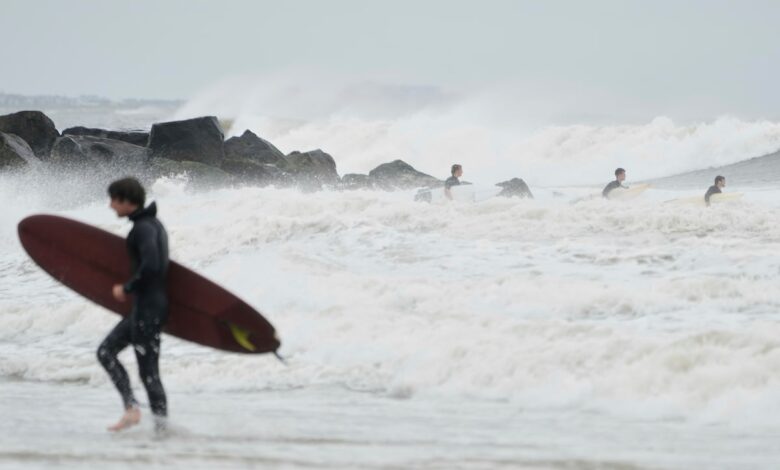Strong wind, cracking flows while hurricane continues to the sea

The recent hurricane that hit the east coast caused strong winds and waves that battered Nantucket and Martha’s Vineyard. Dangerous RIP movements threatened from the Carolinas to New England, but the storm eventually made its way further out to sea.
The National Hurricane Center in Miami reported that the hurricane had weakened to a category 1 with maximum winds of 150 kilometers per hour. Although it was twice the size of an average hurricane, it managed to avoid causing widespread destruction as it moved through the Atlantic Ocean.
Massachusetts experienced high winds, with Nantucket recording winds up to 72 km/h. Ferry services to and from Boston were affected, and various ocean beaches along Cape Cod were closed due to high surf and rip currents.
In North Carolina, waves battered the city of Kill Devil Hills, causing water and sand to merge on Highway 12. Damage assessments were still underway, but it seemed that the low-lying islands had experienced widespread problems.
Warnings were lifted for Bermuda, North Carolina, and Virginia, but flood warnings remained in place for the mid-Atlantic and New England coasts. Some roads were impassable due to flooding.
Despite beach closures in New York City, surfers still took to the waves at Rockaway Beach in Queens. The storm created challenging conditions for experienced surfers, but they embraced the opportunity to ride the powerful waves.
While the outer banks of North Carolina were vulnerable to erosion, there was no significant structural damage reported. Dare County officials hoped that the worst of the storm was behind them.
On the Pier van Jennette in Nags Head, spectators marveled at the huge waves crashing into the structure. Despite the destruction caused by the storm, residents like David Alan Harvey appreciated the power of nature.
This hurricane, originating from the Cape Verde islands off the coast of Africa, had fluctuated in intensity but remained unusually large. Known as Cape Verde hurricanes, these storms pose a significant threat to North America due to their long journey across warm ocean waters.
Overall, the east coast weathered the storm relatively well, with minimal damage reported. Residents and officials were grateful that the hurricane had moved further out to sea, sparing the coast from more significant destruction.



